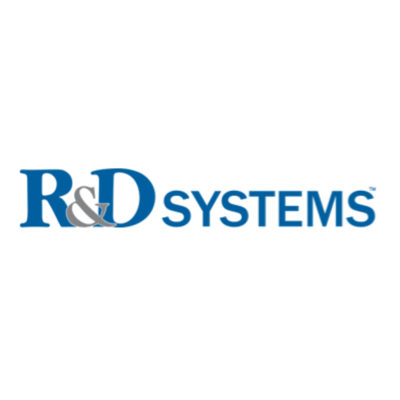 全部商品分类
全部商品分类首页
hIFN-a ELISA Kit (1 Kit)


品牌: R&D Systems
 下载产品说明书
下载产品说明书 下载SDS
下载SDS 用小程序,查商品更便捷
用小程序,查商品更便捷


 收藏
收藏
 对比
对比 咨询
咨询
产品介绍
产品介绍
产品信息
产品详情
Product Summary
Human IFN-alpha ELISA Kit Summary
Assay Length
3.25 hours
Sample Type & Volume Required Per Well
Cell Culture Supernates (100 uL)
Sensitivity
12.5 pg/mL
Assay Range
156.0 - 5,000 pg/mL (Cell Culture Supernates)12.5 - 500 pg/mL (Cell Culture Supernates),
Specificity
Human IFN-alpha
Cross-reactivity
< 0.5% cross-reactivity observed with available related molecules.< 50% cross-species reactivity observed with species tested.
Interference
No significant interference observed with available related molecules.
背景
别名
IFNA,IFNA2,IFNA2b,IFNalpha,IFN-alpha,IFN-alphaA,INFA2,interferon alpha 2,LeIF D,Interferon alpha

背景
Background: IFN-alpha
There are 3 major classes of interferons (IFNs): Type I, Type II and Type III. Interferon alpha (IFN-alpha ), along with IFN-beta, IFN-δ, IFN-epsilon, IFN-kappa, IFN-omega and IFN-tau are all Type I IFNs (1). The sole type II IFN is IFN-gamma. Type III IFNs include IFN-lambda 1, IFN-lambda 2, IFN-lambda 3 and IFN-lambda 4 (2). As a part of the innate immune response, Type I IFNs are rapidly induced in response to viral nucleic acids such as double stranded DNA or RNA (dsDNA, dsRNA) and single stranded RNA (ssRNA), viral glycoproteins, microbial cytosinephosphate-guanosine (CpG) DNA, DNA damage, and chromosomal instability (3,4).
IFN-alpha subtypes are well described (5-9). There are 15 human IFN-alpha subtypes with 80% amino acid identity (10). The number of IFN-alpha subtypes varies by species with 6 equine subtypes, 17 porcine subtypes, 14 bovine subtypes, and 9 canine subtypes known currently. Human IFN-alpha subtypes include: IFN-alpha 1a, IFN-alpha 1b, IFN-alpha 2a, IFN-alpha 2b, IFN-alpha 4a, IFN-alpha 4b, IFN-alpha 5, IFN-alpha 6 IFN-alpha 7, IFN-alpha 8, IFN-alpha 10, IFN-alpha 14, IFN-alpha 16, IFN-alpha 17, and IFN-alpha 21. Although there is one known heterodimeric IFN-alpha receptor (IFN-alpha R, described below), each IFN-alpha subtype has been correlated with differing biological activities (7). Variability in biological responses can be attributed to differences in binding affinity and duration, receptor density, feedback responses and intracellular characteristics (11). IFN-alpha responses have been described as robust, especially in the context of viral infection responsiveness by all cells or tunable in a cell type specific manner.
IFN-alpha signaling is well characterized (2, 5,11,12,13). IFN-alpha is a ligand for IFN alpha R, which includes two subunits IFN alpha R1 and IFN alpha R2. IFN-alpha ligand binding to the ubiquitously expressed IFN alpha R1 triggers a conformational change which allows for the heterodimerization of IFN alpha R1 and IFN alpha R2 (10). Heterodimerization results in the cross phosphorylation of the Janus-activated Kinase 1 (JAK1) on IFN alpha R2 and tyrosine kinase 2 (TYK2) on IFN alpha R1 respectively, as well as the intracellular domain of IFN alpha R1 and IFN alpha 2 (9). The transcription factors Signal transducer and activator of transcription (STAT) 1 and 2 are subsequently recruited to IFN alpha R via their Src homology 2 (SH2) domain and phosphorylated. In the canonical IFN-alpha signaling pathway, phosphoSTAT1/STAT2 heterodimers associate with Interferon Regulatory Factor 9 (IRF9) to form Interferon Stimulated Gene Factor 3 (ISGF3), which translocates into the nucleus to bind to gamma-activated sequences (GASs) or interferon- stimulated response elements (ISREs). This stimulates the transcription of interferonstimulated genes (ISGs). STAT 2 homodimers and monomers can also associate with IRF-9 to form ISGF3-like complex, which also binds to ISRE to stimulate the transcription of ISGs (9).
Although IFN-alpha is most commonly associated with viral infections, it has been associated with other pathological events. Type 1 interferons represent a standard of care for suppressing Hepatitis B (HBV) or C (HCV) (14). However, it has been associated with neuropsychiatric symptoms such as depression, anhedonia, anxiety and cognitive impairment (15). The role of IFN-alpha in cancer is complex as well. For example, in the context of inflammatory breast cancer, IFN-alpha is upregulated. Although IFN-alpha has been correlated with cellular senescence and apoptosis, some subtypes have been correlated with increased cellular migration and drug resistance.
Long Name:
Interferon alpha
Entrez Gene IDs:
3440 (Human)
Alternate Names:
IFNA; IFNA2; IFNA2b; IFNalpha; IFN-alpha; IFN-alphaA; INFA2; interferon alpha 2; LeIF D

研究领域
制备和贮存
保存方式
Preparation and Storage
Shipping
The product is shipped with polar packs. Upon receipt, store it immediately at the temperature recommended below.
Storage
Store the unopened product at 2 - 8 °C. Do not use past expiration date.
声明 :本官网所有报价均为常温或者蓝冰运输价格,如有产品需要干冰运输,需另外加收干冰运输费。





